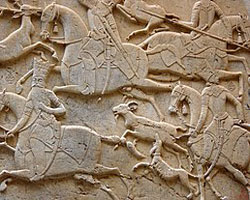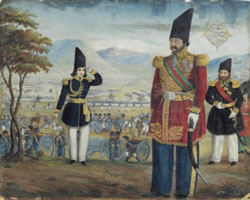Geography
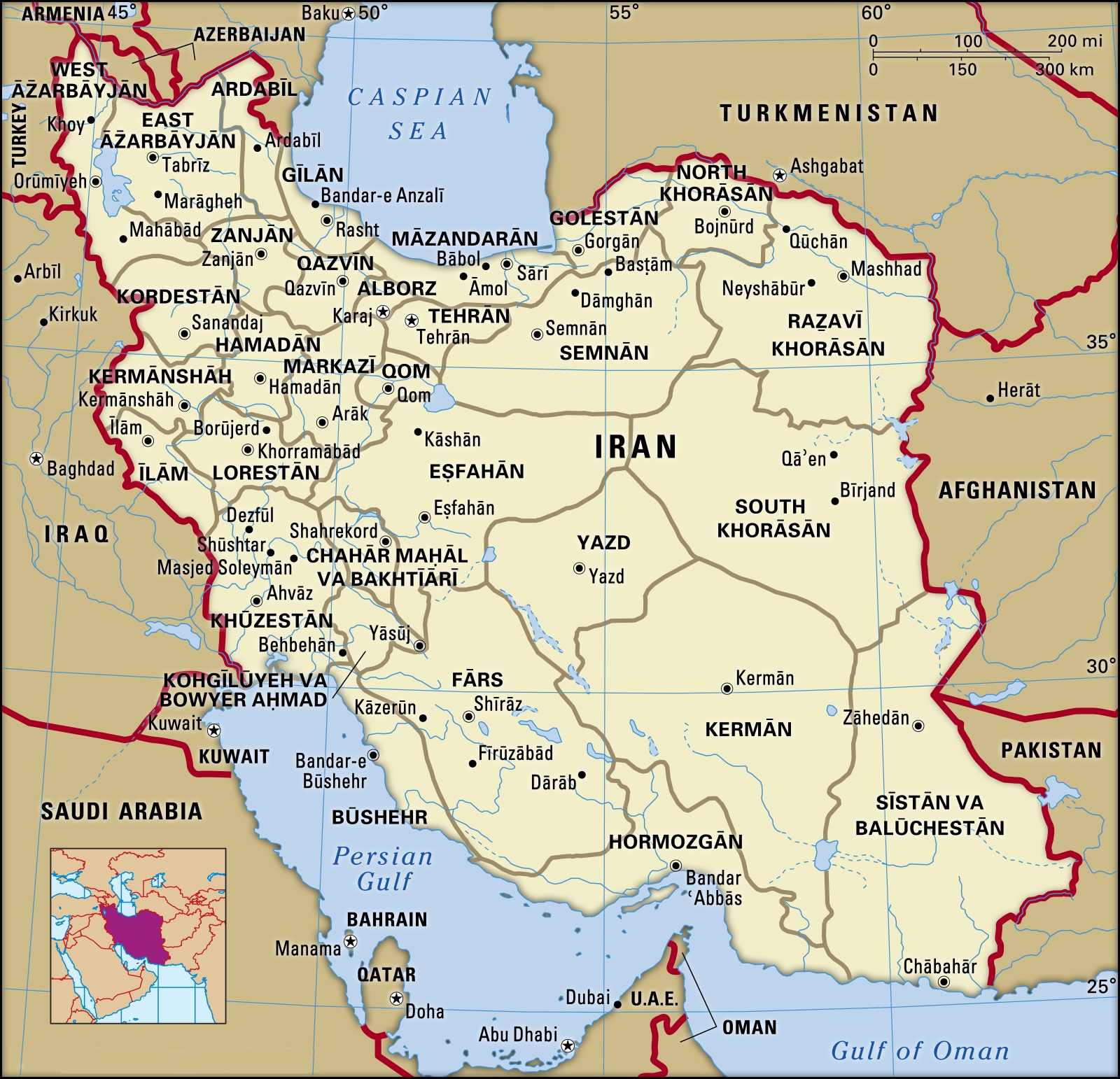
Iran is located in southwestern Asia, largely on a high plateau situated between the Caspian Sea to the north and the Persian Gulf and the Gulf of Oman to the south. Its area is 636,300 square miles (1,648,000 square kilometers). Its neighbors are, on the north, Azerbaijan, Armenia, and Turkmenistan; on the east, Pakistan and Afghanistan; and on the west Turkey and Iraq. Iran's total boundary is 4,770 miles (7,680 kilometers). Approximately 30 percent of this boundary is seacoast. The capital is Tehran (Teheran).
History

Languages

Iran is a linguistically diverse country. Persian (Farsi) is the language of the majority and the official language of the state. There are some other languages with a smaller number of speakers as well as some dialects spoken across the country. The most widely speaking languages and dialects of Iran are as follows:
- Azeri
- Kurdish
- Gilaki
- Mazandarani
- Luri
- Arabic
- Balochi
- Turkmen
Arts
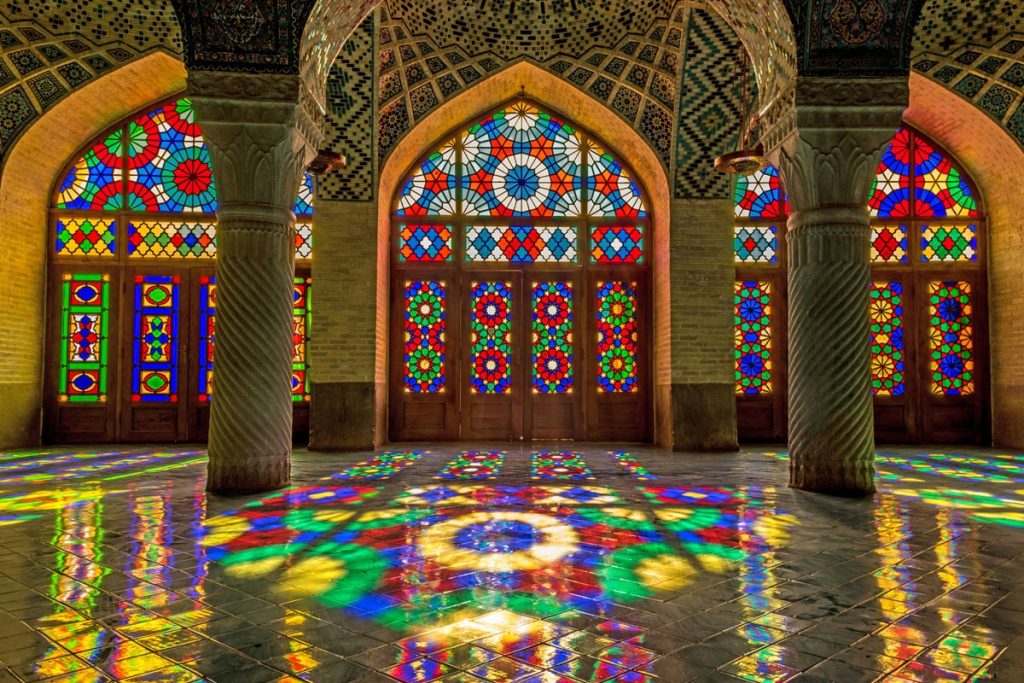
Persian art or Iranian art has one of the richest art heritages in world history and encompasses many traditional disciplines. At different times, influences from the art of neighboring civilizations have been very important, and latterly Persian art gave and received major influences as part of the wider styles of Islamic art. The most fascinating handicrafts and arts in Iran are as follows:
- Architecture
- Painting
- Carpet weaving
- Pottery
- Calligraphy
- Metal working
- Sculpture
- Khatam kari
- Music
- literature
Culture and customs
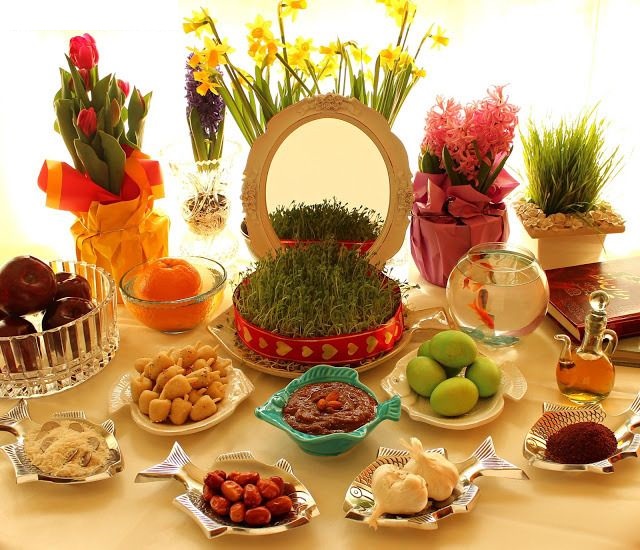
Iran is a culturally varied country with so many subcultures in it. The reason for this status is that many nations live in this land because of the historical reasons and Iran’s geographical position. Knowing the general Iranian culture and customs can help you a lot in communication and setting your timetable for visiting. Some of the most well-known Iranian culture and customs are as follows:
- Nowruz (new year)
- Sizdah be dar
- Chahar shanbe suri
- Rowzeh khani
- Tazieh
- nazri
Food
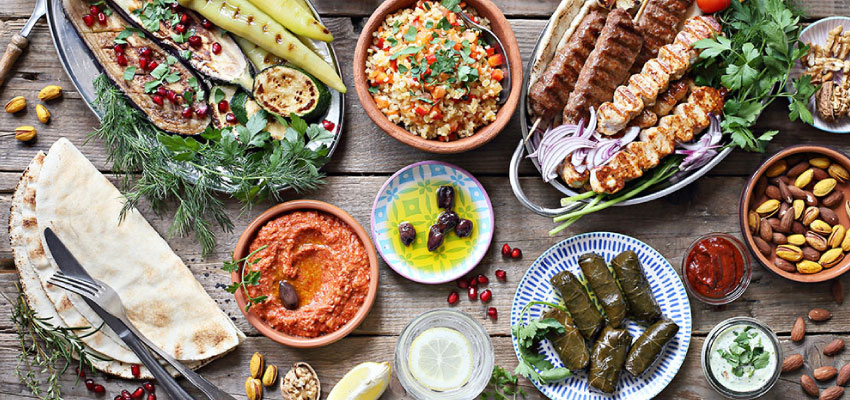
As one might expect from Iran's geographic situation, its food strikes a medium between Greek and Indian preparations. It is more varied than Greek food, and less spicy and subtler than Indian food with a greater use of fresh ingredients.
Iranians have a healthy diet centered on fresh fruits, greens and vegetables. Meat (usually lamb, goat, or chicken) is used as a condiment rather than as the centerpiece of a meal. Rice and fresh unleavened or semi-leavened whole-grain bread are staple starches. The primary beverage is black tea.
The Iranian national dish, called chelow kabab, a common drink with a meal is dough , a yogurt and salted water preparation that is similar to Turkish ayran, Lebanese lebni, and Indian lassi. Sweets are more likely to be consumed with tea in the afternoon than as dessert. The most delicious dishes of Iran are as follows:
- Fesenjan
- ghormeSabzi
- dizi (Abgoosht)
- chelow kabab
- tahchin
- khoreshte gheime
- zereshk polo ba morgh
Monuments

Iran is a country with a long history, a rich civilization and a rich culture, with many valuable historical monuments from different periods. Iran was known around the world as a powerful empire once upon a time. There are many historical wonders in Iran that are very interesting for tourists interested in history and historical monuments. The most famous historical monuments of Iran are as follows:
- Shah Mosque, Isfahan.
- Ali Qapu Palace, Isfahan.
- Nasir-ol-Molk Mosque, Shiraz.
- Golestan Palace, Tehran.
- Persepolis, Shiraz.
- Earth City of Yazd.
- Naqsh-e Rustam Necropolis, Shiraz.
- Tower of Silence, Yazd.
- Khaju Bridge, Isfahan.

.jpg)
